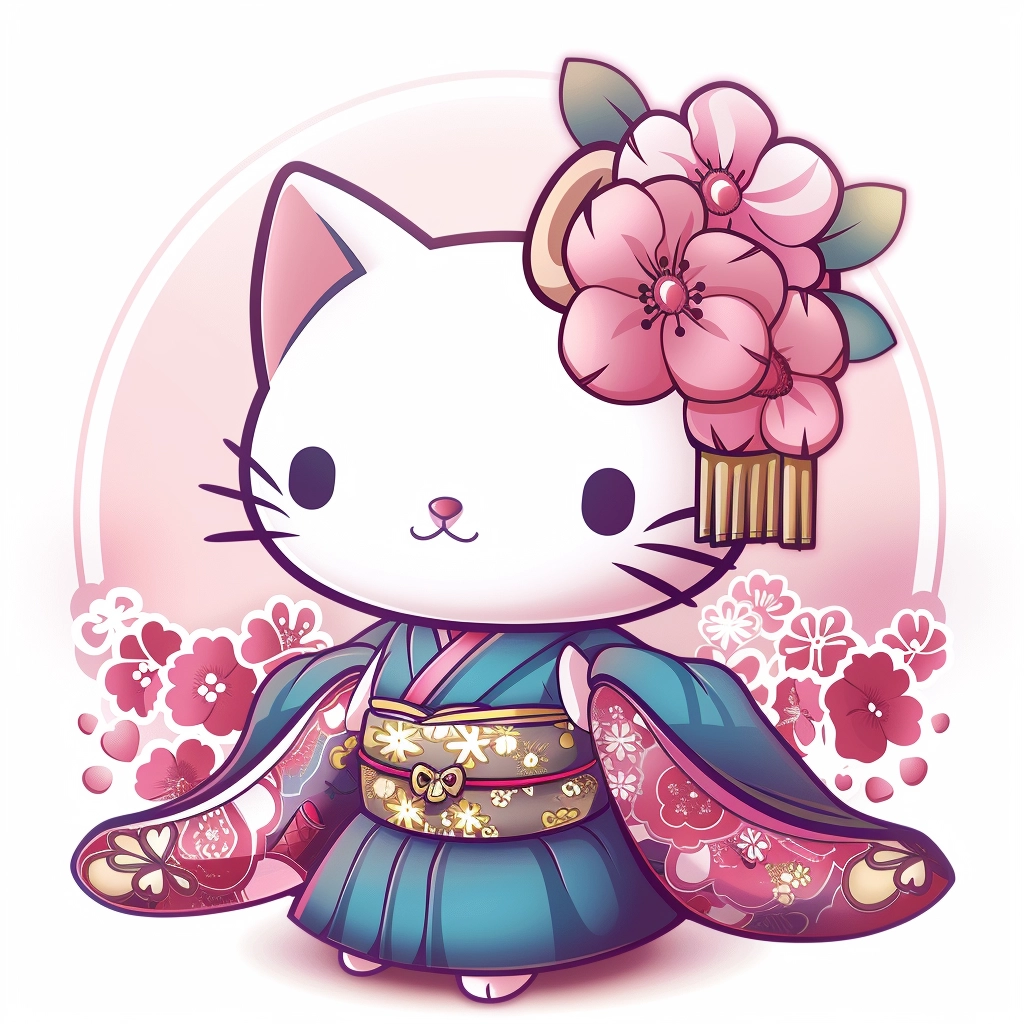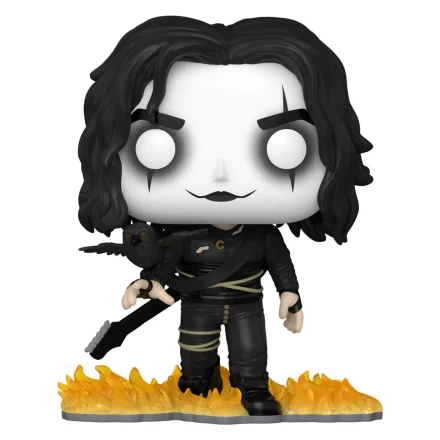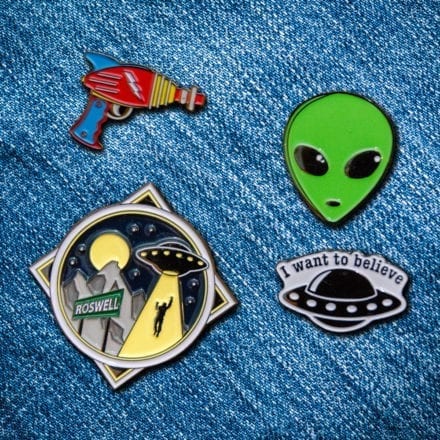Since Hello Kitty’s inception by Sanrio in 1974, this iconic character has transcended the boundaries of a simple brand logo to become a cultural phenomenon. Embodied as a small, round, white cat with no visible mouth but a distinctive red bow, Hello Kitty, or Kitty White, mirrors the Japanese tradition of kawaii—a culture of cuteness that appeals not just to children but also to a broader demographic including teenagers and adults. This wide-reaching allure has fostered a deep connection with fans worldwide, especially resonating with the primary female demographic aged 16-24, striking a chord of nostalgia and contemporary appeal.
From being a figure on a coin purse to a character that now spans across animated series, video games, and even themed cafes, the evolution of Hello Kitty illustrates a masterclass in marketing, expanding well beyond its initial target audience to include iconic Sanrio characters like Kuromi, Cinnamoroll, My Melody, Pompompurin, Keroppi, Pochacco, and Badtz-Maru. As we navigate through the story of Hello Kitty, we delve into the roots of this beloved icon, exploring how it has managed to maintain its relevance as a symbol of peace and friendship in modern times.
The Birth of Hello Kitty in 1974
In the vibrant landscape of 1970s Japan, amidst the burgeoning ‘kawaii’ culture, a character was born that would become a beloved icon around the globe. Yuko Shimizu, a talented designer at Sanrio, introduced the world to Hello Kitty in 1974. Originally depicted on a small vinyl coin purse released in 1975, this adorable figure was characterized by her distinctive appearance: a white cat with a red bow and no visible mouth, symbolizing happiness and friendship. The simplicity of her design and her relatable personality traits quickly captured the hearts of many, especially appealing to the young female demographic.
- Creation and Design Evolution:
- Original Designer: Yuko Shimizu initially sketched Hello Kitty, a design that has remained largely unchanged to this day.
- Current Designer: Yuko Yamaguchi took over as the principal designer after Shimizu’s departure in 1976, continuing to foster the character’s global appeal.
- Iconic Features: Known for her red bow on the left ear and her expressionless but cute face, Hello Kitty was designed to be a friend to children worldwide, not just a mascot.
- Cultural and Commercial Impact:
- Sanrio’s Philosophy: Founded on the principle of ‘small gift, big smile,’ Sanrio aimed to create products that spread happiness, a mission that Hello Kitty exemplified perfectly.
- Global Expansion: Following her debut, Hello Kitty soared in popularity in Japan and subsequently captured hearts internationally, leading to the opening of the first Sanrio store in the United States in 1976.
- Brand Expansion: Sanrio broadened its range to include various Hello Kitty-themed merchandise, from greeting cards to apparel, further solidifying her status as a cultural and marketing phenomenon.
Hello Kitty’s journey from a simple design on a coin purse to a symbol of friendship and peace showcases the genius behind Sanrio’s branding strategy. Her timeless appeal resonates deeply with the primary audience of females aged 16-24, embodying a blend of nostalgia and modernity that continues to enchant fans across generations. As we explore further into Hello Kitty’s evolution, we see a character that has not only stood the test of time but also paved the way for the expansion of an empire built on the power of cuteness and relatability.
Hello Kitty’s Evolution and Global Expansion

Hello Kitty’s remarkable evolution and expansive global reach are a testament to its enduring appeal and strategic brand positioning. Here’s how this iconic character has grown from a simple illustration to a worldwide phenomenon:
Product Diversification and Global Merchandise:
- Wide Range of Products: Hello Kitty is not just a character but a lifestyle brand found on everything from clothing and accessories to home decor and high-tech gadgets like face massagers. This extensive product lineup caters to fans of all ages, making Hello Kitty a part of everyday life.
- Special Editions and Collectibles: Limited edition products, including rare collectibles, appeal to a broad spectrum of collectors and enthusiasts, enhancing the brand’s allure and creating a vibrant aftermarket.
Media Expansions and Thematic Attractions:
- Animated Success: Beyond merchandise, Hello Kitty stars in her own animated television shows and movies, which helps maintain her presence in popular culture and media.
- Global Attractions: The brand extends into real-world experiences with Hello Kitty-themed parks and cafes, such as the one in Las Vegas, and theme parks across Asia, including Harmonyland in Japan and Hello Kitty Shanghai Times in China.
Collaborative Ventures and Cultural Influence:
- Strategic Collaborations: Hello Kitty has successfully partnered with various brands across different sectors, including fashion, beauty, and consumer electronics, to create co-branded products that are highly sought after.
- Cultural Ambassador: As a symbol of the ‘kawaii’ culture, Hello Kitty plays a pivotal role in the globalization of Japanese pop culture, appealing to the kawaii enthusiasts and fashion-forward youth, primarily females aged 16-24, by embodying themes of friendship, peace, and adorable aesthetics.
These strategic expansions and collaborations have not only increased Hello Kitty’s global footprint but also allowed Sanrio to continually engage with diverse demographics, ensuring the brand remains relevant and beloved across generations.
The Cultural Impact of Hello Kitty
Hello Kitty, with her iconic bow and expressionless face, has significantly impacted global culture, particularly resonating with the youthful demographics of 16-24, primarily females. This section explores the depth of her cultural influence and the unique aspects that make her a global ambassador of Japanese “kawaii” culture.
Cultural Representation and Diplomatic Roles:
- Global Ambassador: Hello Kitty serves not only as a symbol of cuteness but has also been officially recognized as a diplomatic envoy. Her roles include being the tourism ambassador to China and Hong Kong, illustrating her influence in diplomatic and cultural exchanges.
- UN Partnerships: The #HelloGlobalGoals campaign, a partnership with the United Nations, underscores her role in promoting Sustainable Development Goals, highlighting her influence beyond mere entertainment.
Symbolism and Identity:
- Cultural Identity: For many Asian Americans, Hello Kitty is more than a character; she represents a connection to heritage and cultural roots, serving as a bridge between Eastern and Western cultures.
- Empathy and Emotion: The absence of a mouth is a design choice that allows individuals to project their emotions onto Hello Kitty, making her a universal friend capable of understanding and accepting diverse feelings and perspectives.
Influence on Fashion and Lifestyle:
- Fashion Icon: Beyond children’s products, Hello Kitty has ventured into adult fashion markets with branded items like handbags and makeup, appealing to the aesthetic and identity of young adults.
- Lifestyle Influence: The ‘sanriocore’ or ‘soft’ aesthetic influenced by Hello Kitty has permeated fashion and lifestyle, promoting a wave of pastel colors and cute character-themed products that resonate with young adults globally.
Through these roles and representations, Hello Kitty transcends the typical boundaries of a cartoon character, embodying values of friendship, empathy, and cultural connectivity, making her an enduring icon in popular culture.
Marketing Genius Behind Hello Kitty
Hello Kitty’s marketing genius lies in its strategic brand positioning and innovative campaigns, which have captivated a global audience, particularly appealing to young adults, primarily females aged 16-24. Here’s a closer look at the elements that have contributed to this iconic brand’s success:
Strategic Brand Collaborations and Licensing:
- Fashion and Lifestyle Partnerships: Collaborations with high-profile fashion brands like Puma and Asos have allowed Hello Kitty to tap into the adult fashion market, maintaining relevance with an older demographic that grew up with the character.
- Diverse Product Lines: The brand’s versatility is evident in its extensive range of products, from stationery and clothing to home goods, ensuring there is something for every fan.
- Influencer Marketing: The launch of the ‘Hello Kitty Gang’ influencer initiative in 2018 showcases a modern approach to marketing, leveraging social media to engage with a younger, digitally-savvy audience.
Innovative Marketing Strategies:
- Emotional Connection: The design of Hello Kitty, particularly her mouthless expression, plays a crucial role in her appeal. This unique feature allows consumers to project their feelings onto the character, making her universally relatable.
- Themes of Friendship and Happiness: Marketing campaigns often emphasize values like friendship, kindness, and joy, resonating deeply with fans and fostering a positive brand image.
Global and Cultural Influence:
- Cultural Ambassador Roles: Hello Kitty’s appointment as children’s ambassador to UNICEF and her involvement in global campaigns like #HelloGlobalGoals highlight her role beyond entertainment as a symbol of friendship and global goodwill.
- Universal Appeal: The simplicity and adaptability of Hello Kitty’s design have allowed her to transcend cultural and linguistic barriers, making the brand a household name worldwide.
Through these targeted strategies, Hello Kitty continues to thrive as a powerful and beloved brand, consistently introducing new products and collaborations that resonate with fans across different age groups and cultural backgrounds.
Hello Kitty in Modern Times

Hello Kitty’s enduring appeal in modern times continues to resonate, especially among the youthful demographic of 16-24, primarily females. The character’s simplicity and universal appeal have been pivotal in maintaining a strong fan base across different age groups. Here’s a closer look at how Hello Kitty remains a cultural and commercial powerhouse:
Brand Value and Economic Impact:
- Financial Worth: The Hello Kitty brand is valued at approximately $7 billion, showcasing its immense global impact.
- Revenue Generation: Sanrio, the company behind Hello Kitty, generates around $759 million annually from this character alone, highlighting her significant contribution to the company’s financial health.
Theme Parks and Global Presence:
- Dedicated Theme Parks: Hello Kitty is celebrated in two theme parks in Japan—Puroland in Tokyo and Harmonyland in Oita. These parks are pivotal in promoting the Hello Kitty culture and are popular destinations for fans and families.
- Retail Expansion: There are over 100 Sanrio boutiques across Japan and more than 15,000 retail locations in the U.S. that sell Sanrio goods, ensuring Hello Kitty’s presence in everyday consumer life.
Cultural Significance and Character Appeal:
- Anthropomorphic Features: Classified as a ‘gijinka’, Hello Kitty represents the personification of a cat, adding a unique cultural layer to her character.
- Iconic Design: Standing five apples tall and weighing three apples, Hello Kitty’s design features clean lines and an oversized head, making her instantly recognizable and adorably appealing.
Product Range and Collaborative Ventures:
- Extensive Product Lines: The brand has expanded to include a wide array of products catering to people of all ages, from children to adults, demonstrating its versatility.
- Brand Collaborations: Sanrio has partnered with well-known brands like Converse, Anti Social Social Club, and MAC Cosmetics, enhancing Hello Kitty’s visibility and appeal across different consumer sectors.
Through these strategic initiatives and her timeless charm, Hello Kitty continues to captivate hearts and remain relevant in a rapidly changing cultural landscape.
Conclusion
Throughout this exploration of Hello Kitty’s cultural journey and eponymous brand evolution, we’ve underscored the character’s near-universal appeal, a testament to its strategic positioning that spans across demographics, particularly resonating with audiences aged 16-24, primarily female. From its humble beginnings on a small coin purse to becoming a global ambassador of friendship and the epitome of ‘kawaii’ culture, Hello Kitty’s timeless charm and significant commercial success illustrate how a simple design can foster a deep, enduring connection with fans around the world. The character’s ability to evolve while staying true to its core values of joy, friendship, and peace plays a pivotal role in its sustained relevance and affection among audiences, especially within the targeted demographic.
The concluding thought regarding Hello Kitty’s journey, from a single product line to a diverse, global empire, is a narrative not just of a brand’s growth but of an icon that continues to embody the simplicity and purity of heart that appeals to the youth, primarily females aged 16-24. This character’s story is a compelling case study in innovative brand evolution and cultural impact, inviting further exploration and engagement with its wide array of thematic expressions and products. For those captivated by Hello Kitty’s enchanting world and wanting to delve deeper, the invitation to check out our Hello Kitty merch provides a direct gateway to owning a piece of this beloved cultural phenomenon.
FAQs
1. What is Hello Kitty’s age?
Hello Kitty was created in 1974, which means she is approximately 48 years old. In the context of her character in the series, she is portrayed as an 8 to 9-year-old third-grade student.
2. What significant milestone will Hello Kitty reach in 2024?
In 2024, Hello Kitty will celebrate her 50th anniversary. Celebratory events, including her appearance in the Grand Parade, are scheduled for April 21, 2024.
3. When did the Hello Kitty TV show first air?
The “Hello Kitty’s Furry Tale Theater” TV show first aired in 1987. It featured Hello Kitty and her friends reenacting various popular fairy tales and stories. The show ran from September 19 to December 12, 1987, and included 13 half-hour episodes, each split into two 11-minute cartoons.
4. Who is the oldest Sanrio character and when was it introduced?
Coro Chan is the oldest original Sanrio character, introduced in 1973. Known as コロちゃん (Korochan) in Japanese, Coro Chan is depicted as a gentle and laid-back bear.






